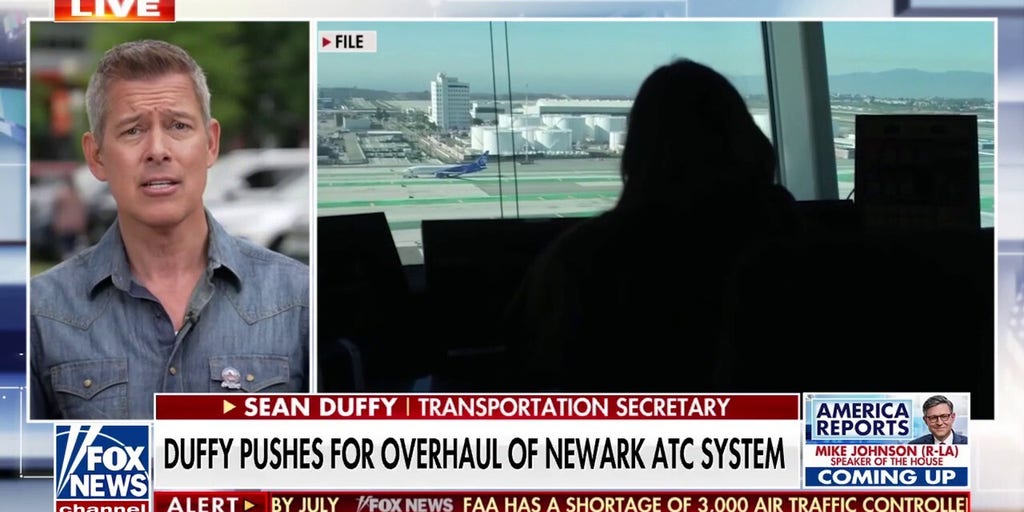Air Traffic Control Crisis At Newark Airport: A Possible Solution

Welcome to your ultimate source for breaking news, trending updates, and in-depth stories from around the world. Whether it's politics, technology, entertainment, sports, or lifestyle, we bring you real-time updates that keep you informed and ahead of the curve.
Our team works tirelessly to ensure you never miss a moment. From the latest developments in global events to the most talked-about topics on social media, our news platform is designed to deliver accurate and timely information, all in one place.
Stay in the know and join thousands of readers who trust us for reliable, up-to-date content. Explore our expertly curated articles and dive deeper into the stories that matter to you. Visit Best Website now and be part of the conversation. Don't miss out on the headlines that shape our world!
Table of Contents
Air Traffic Control Crisis at Newark Airport: A Possible Solution
Newark Liberty International Airport (EWR), a major East Coast hub, has recently experienced significant air traffic control issues, leading to flight delays, cancellations, and widespread passenger frustration. These disruptions have highlighted a critical need for innovative solutions to manage the increasing air traffic volume and prevent future crises. This article delves into the root causes of the problem and proposes a potential path forward.
The Current Situation: A Perfect Storm of Problems
The recent surge in air travel post-pandemic, coupled with existing staffing shortages within the Federal Aviation Administration (FAA) air traffic control system, has created a perfect storm at Newark Airport. Delays are becoming increasingly common, impacting thousands of travelers daily. This isn't just an inconvenience; it's impacting the regional economy, costing airlines millions, and severely damaging the reputation of EWR.
Understanding the Root Causes
Several factors contribute to the ongoing air traffic control crisis at Newark:
- Staffing Shortages: The FAA faces a significant shortage of air traffic controllers, leading to overworked and understaffed facilities. Training new controllers is a lengthy and complex process, exacerbating the problem.
- Technological Limitations: While modernization efforts are underway, the current air traffic control system relies on outdated technology in some areas, hindering efficiency and increasing the risk of errors.
- Increased Air Traffic: The post-pandemic rebound in air travel has significantly increased the volume of flights, exceeding the capacity of the current system to handle smoothly.
- Weather Impacts: Adverse weather conditions frequently exacerbate existing delays, compounding the problem and leading to cascading effects throughout the system.
A Potential Solution: Implementing NextGen Air Traffic Management
One promising solution lies in the full implementation of the FAA's Next Generation Air Transportation System (NextGen). NextGen utilizes satellite-based navigation and data communication technologies to improve efficiency and reduce reliance on ground-based radar. Key benefits include:
- Improved Precision: NextGen allows for more precise flight paths, reducing spacing requirements between aircraft and increasing the overall capacity of the airspace.
- Enhanced Efficiency: Automated systems can handle routine tasks, freeing up air traffic controllers to focus on complex situations and emergencies.
- Reduced Delays: By optimizing flight paths and reducing congestion, NextGen aims to minimize delays and cancellations.
- Increased Safety: The enhanced precision and automation features of NextGen contribute to a safer air travel environment.
Beyond Technology: Addressing the Human Factor
While technological upgrades are crucial, addressing the human factor is equally important. This includes:
- Increased Controller Training & Recruitment: Attracting and retaining qualified air traffic controllers requires competitive salaries, improved working conditions, and a streamlined recruitment process.
- Improved Work-Life Balance: Reducing controller workload and improving work-life balance will help prevent burnout and maintain a skilled workforce.
- Investing in Advanced Training Simulators: More realistic and advanced simulators can enhance training effectiveness and prepare controllers for diverse scenarios.
Conclusion: A Collaborative Approach is Key
Resolving the air traffic control crisis at Newark Airport requires a multi-faceted approach. Implementing NextGen, addressing staffing shortages, and investing in advanced training programs are all essential components. A collaborative effort between the FAA, airlines, and airport authorities is crucial to ensure the smooth and efficient operation of this vital transportation hub. The future of air travel at EWR, and indeed across the nation, depends on it. We need proactive solutions, not just reactive measures to manage this evolving crisis. The time for action is now.

Thank you for visiting our website, your trusted source for the latest updates and in-depth coverage on Air Traffic Control Crisis At Newark Airport: A Possible Solution. We're committed to keeping you informed with timely and accurate information to meet your curiosity and needs.
If you have any questions, suggestions, or feedback, we'd love to hear from you. Your insights are valuable to us and help us improve to serve you better. Feel free to reach out through our contact page.
Don't forget to bookmark our website and check back regularly for the latest headlines and trending topics. See you next time, and thank you for being part of our growing community!
Featured Posts
-
 Decoding The 1000 Jump In Sbet Stock Price A Deep Dive
May 30, 2025
Decoding The 1000 Jump In Sbet Stock Price A Deep Dive
May 30, 2025 -
 Urgent Search For Missing Lexington Teen Police Seek Publics Help
May 30, 2025
Urgent Search For Missing Lexington Teen Police Seek Publics Help
May 30, 2025 -
 Roest And Kuokkanen Evaluating The Penguins Coaching Strategy In The Metropolitan Division
May 30, 2025
Roest And Kuokkanen Evaluating The Penguins Coaching Strategy In The Metropolitan Division
May 30, 2025 -
 Espn Terry Bradshaws Scathing Take On Steelers Pursuit Of Aaron Rodgers
May 30, 2025
Espn Terry Bradshaws Scathing Take On Steelers Pursuit Of Aaron Rodgers
May 30, 2025 -
 Slowdowns At Newark Duffys Air Traffic Control Overhaul Faces Headwinds
May 30, 2025
Slowdowns At Newark Duffys Air Traffic Control Overhaul Faces Headwinds
May 30, 2025
